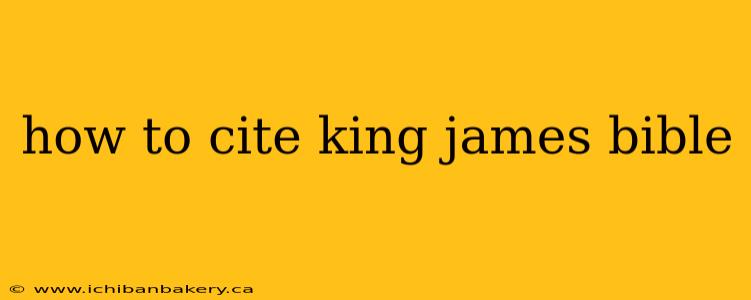The King James Bible (KJV), a cornerstone of English literature and religious studies, requires specific citation methods depending on your chosen style guide. This guide covers common styles, offering clarity and ensuring accurate referencing of this influential text. Knowing how to properly cite the King James Bible is crucial for maintaining academic integrity and avoiding plagiarism.
Understanding Different Citation Styles
Several style guides exist, each with its own nuances. The most prevalent styles are MLA, Chicago, and Turabian. While the core principles remain consistent—identifying the book, chapter, and verse—the formatting differs.
MLA (Modern Language Association) Style
The MLA style emphasizes brevity. In-text citations for the KJV are typically formatted as follows:
- Example: (Gen. 1.1) This cites Genesis, chapter 1, verse 1.
For longer quotations, you may include a page number if using a specific edition. Always include a full bibliographic entry in your Works Cited page:
- Example (Works Cited): The Holy Bible: King James Version. Cambridge University Press, 2018. (Adapt this with your specific edition's publisher and year.)
Chicago/Turabian Style
Chicago and Turabian styles (often used in history and humanities) offer slightly more detailed citations. In-text citations typically look like this:
- Example: (Gen. 1:1) Note the use of a colon instead of a period to separate chapter and verse.
For longer quotations, use block quotes. Your bibliography/notes would follow a similar format to MLA, but perhaps with more detail depending on the specific edition.
- Example (Bibliography/Notes): The Holy Bible: King James Version. [Publisher], [Year]. Again, replace the bracketed information with specifics about your edition.
Other Styles
Other style guides might have slight variations. Always consult your instructor's guidelines or the specific style manual for precise instructions. The key is consistency throughout your work.
Essential Elements for Accurate Citations
Regardless of the style guide, consistent elements ensure accuracy:
-
Book: Always begin with the book's abbreviated name (e.g., Gen. for Genesis, Exod. for Exodus, Matt. for Matthew, etc.). Use standard abbreviations. You can find lists of abbreviations online or in many Bible study resources.
-
Chapter: Indicate the chapter number using numerals (e.g., 1, 2, 3).
-
Verse: Specify the verse number(s) using numerals (e.g., 1, 2, 3-5, 10-12).
-
Edition (if relevant): If you are referencing a particular edition (for example, the Oxford Annotated King James Version), include this information in your bibliography or footnotes, as it can affect specific wording or page numbers.
Handling Quotations
When quoting the King James Bible:
- Short quotations: Integrate them directly into your text using parentheses for the citation.
- Long quotations: Use block quotes (indented) for passages exceeding four lines. Maintain original spelling and punctuation.
Finding Abbreviated Book Names
Several resources can help you find standard abbreviations for books of the KJV:
- Online Bible Resources: Many websites providing online Bible versions (like Bible Gateway) use standard abbreviations that you can easily copy.
- Bible Dictionaries and Concordances: These resources often include a table of abbreviations.
- Style Manuals: Your chosen style guide (MLA, Chicago, etc.) may include a list of biblical book abbreviations.
Example Citations in Different Styles
Let’s cite the famous verse, John 3:16:
- MLA: (John 3.16)
- Chicago/Turabian: (John 3:16)
By following these guidelines and consulting the appropriate style manual, you can accurately cite the King James Bible in your academic work, preserving the integrity of your research and showcasing your attention to detail. Remember to always double-check your citations for accuracy.
